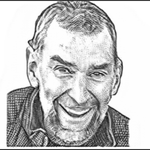- JMP will suspend normal business operations for our Winter Holiday beginning on Wednesday, Dec. 24, 2025, at 5:00 p.m. ET (2:00 p.m. ET for JMP Accounts Receivable).
Regular business hours will resume at 9:00 a.m. EST on Friday, Jan. 2, 2026. - We’re retiring the File Exchange at the end of this year. The JMP Marketplace is now your destination for add-ins and extensions.
- Subscribe to RSS Feed
- Mark Topic as New
- Mark Topic as Read
- Float this Topic for Current User
- Bookmark
- Subscribe
- Mute
- Printer Friendly Page
Discussions
Solve problems, and share tips and tricks with other JMP users.- JMP User Community
- :
- Discussions
- :
- Largest possible model for a DSD?
- Mark as New
- Bookmark
- Subscribe
- Mute
- Subscribe to RSS Feed
- Get Direct Link
- Report Inappropriate Content
Largest possible model for a DSD?
I was watching the following Youtube video below where Dr. Ramsey is showing how to analyze a 6-factor DSD with 4 center points (total runs = 17).
At around the 5:25 mark he's showing how to use best subsets/all possible models to reduce the full quadratic model, and mentions the maximum number of terms for this DOE has 9 terms. He says to calculate this number, take the number of unique settings (13) and subtract 3, then subtract 1 (I'm assuming for the intercept term).
My question is where does the 3 coming from in the 13 - 3 - 1?
Is that just ref "3" erring to the number of levels in the DSD? Is this always the case - for instance if I had a 7-factor, 17-run DOE, is the maximum number of terms I could have in this model 17 - 3 - 1 = 13 terms?
https://www.youtube.com/watch?v=tQYY2bXkVf8&list=PLxfm_owPoF2FCvQPrt0RLsn6mOyAJ1rb_&index=38
- Mark as New
- Bookmark
- Subscribe
- Mute
- Subscribe to RSS Feed
- Get Direct Link
- Report Inappropriate Content
Re: Largest possible model for a DSD?
I did not watch the video. "For m factors, there are 2m + 1 runs based on m fold-over pairs and an overall center point. Each run (excluding the centerpoint) has exactly one factor level at its center point and all others at the extremes."
Jones and Nachtsheim A Class of Three-Level Designs for Definitive Screening in the Presence of Second-Order Effects, JQT, Vol; 43. No. 1 January 2011
Jones' blog:
JMP help has quite a bit of info on DSD's
- Mark as New
- Bookmark
- Subscribe
- Mute
- Subscribe to RSS Feed
- Get Direct Link
- Report Inappropriate Content
Re: Largest possible model for a DSD?
Hi @mjz5448,
For 6 factors, the minimum number of runs for a DSD is 13 (as repeated by @statman).
Here, Philip Ramsey created the design with the minimum number of runs (13) and added 4 extra centre points (there is already one centre point in the DSD by default, so you have 5 centre points in total in this 17-runs DSD presented in the video).
Besides the centre points, there are no other duplicate rows.
So on the total of 17 runs, you have only 13 unique runs (17-4 duplicate rows) that you can use to fit a model, so 13 degrees of freedom. One of this DF is allocated to the intercept, so you're left with 12 degree of freedom. You can check this by fitting an overly complex and saturated model to the data, and see in JMP platforms the number of degree of freedom allocated to the model :
You can see that the 4 centre points duplicate rows are used to estimate error from the model. With the 12 DF allowed for model estimation, you could fit 12 terms in the model.
Here are the results with a saturated model (12 terms) :
Here is a more parcimonous, yet effective, model :
I haven't watched the whole video (yet !), there might be an explanation to the number of terms mentioned by Philip Ramsey (to avoid a saturated model, based on information criteria, etc...). In one of his slide, he tests models up to 11 terms, so I think the idea behind is just to avoid a (nearly-)saturated model which could lead to over-optimistic diagnostic results (but AICc and BIC should be higher, since the model is saturated and complex without much value/benefit added with the last 2/3 terms added).
So I see it more like a "rule of thumb" to have (maxDF - 3) maximum number of terms in a model, to avoid overfitting and estimate model error adequately.
Please find the dataset attached to check and test different models.
"It is not unusual for a well-designed experiment to analyze itself" (Box, Hunter and Hunter)
- Mark as New
- Bookmark
- Subscribe
- Mute
- Subscribe to RSS Feed
- Get Direct Link
- Report Inappropriate Content
Re: Largest possible model for a DSD?
I think you may be right about the 3 DF left for error as a basic rule of thumb. I've always heard 5 DF for error to be safe myself, but I'll try going back at some past slides of his & see if he mentions it as a general rule.
Recommended Articles
- © 2025 JMP Statistical Discovery LLC. All Rights Reserved.
- Terms of Use
- Privacy Statement
- Contact Us





